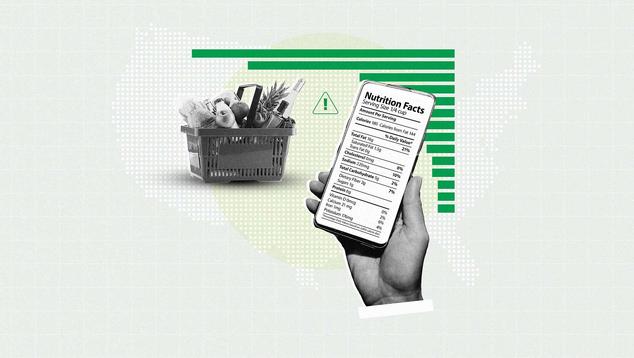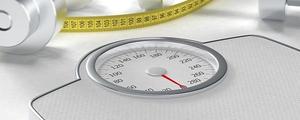WASHINGTON, D.C. — Most U.S. adults consider their diet to be generally healthy and report paying close attention to nutritional information on food labels, especially sugar and calories. Slightly fewer, but still a majority, say they pay attention to food warnings and nutritional recommendations.
Seventy-three percent of U.S. adults, unchanged from last year, trust that the food available in grocery stores is safe to eat. However, following consecutive declines in the past two measures, a new low of 53% of Americans express confidence in the federal government’s regulation of food safety. The latest findings are from Gallup’s July 7-21 Consumption Habits poll.
Americans Continue to Broadly Report Having a Healthy Diet
Overall, 24% of U.S. adults describe their diet as being “very healthy,” while 60% say it is “somewhat healthy.” The combined 84% of Americans who report that their diet is at least somewhat healthy has been generally stable since Gallup first asked the question in 2001.
Among education groups, healthy-diet ratings rise from 78% among those with a high school education or less to 90% among postgraduates. Income groups tell a similar story, with households earning $100,000 or more (91%) far outpacing those earning less than $50,000 (73%). More women (88%) than men (81%) say their diet is very or somewhat healthy, and older Americans (those aged 50 and older) tend to report healthier diets than those aged 18 to 49.
Three-Quarters of Americans Read Nutrition Labels
One-third of Americans say they pay “a great deal” of attention to the nutritional information that is printed on food packages, and 42% pay “a fair amount.” Fifteen percent of U.S. adults say they don't pay much attention to package labels, and 9% don't pay any attention at all.
These figures are similar to what Gallup found in 2013 and 2018 when the question was previously asked.
Women (81%) are more likely than men (70%) to say they read nutrition labels, and attention increases with both education and income. Postgraduates (84%) and high-income Americans (80%) are among the most attentive, while those with a high school education or less (67%) and lower-income Americans (65%) are among the least.
Americans who describe their diet as very healthy are the most likely to pay attention to nutritional information (88%), compared with 76% of those who describe their diet as somewhat healthy and 49% of those who say their diet is not healthy.
For the first time, Gallup asked those indicating they pay attention to nutritional information on food packages to specify what information they look for. Sugar (47%) and calories (37%) are mentioned most often. These are followed by carbohydrates (17%), protein (15%), fat (14%), “ingredients” in general (14%), and sodium (11%) or salt (7%). Just 5% cite looking for added dyes, and 3% each cite chemicals or artificial ingredients.
Six in 10 Pay Attention to Food Warnings, Nutritional Recommendations
A majority of Americans, 60%, report paying attention to food warnings and nutritional recommendations they hear about, including 25% who pay “a lot” of attention and 35% “a fair amount,” while 23% say they pay “some” attention and 18% “not too much” or “none at all.”
Americans’ attention to food warnings and nutritional recommendations has changed little since the late 1980s. There was a brief spike in attentiveness in 2006 that was possibly linked to high-profile incidents of E. coli bacteria being found in fresh spinach, but responses soon returned to prior levels.
Here too, women (68%) are significantly more likely than men (51%) to say they pay at least a fair amount of attention to food warnings. Attentiveness also varies by education, with 68% of postgraduates, 63% of college graduates and 64% of those with some college paying close attention, compared with 50% of adults with no college education.
Americans with an annual household income of $50,000 to less than $100,000 (65%) or $100,000 or more (61%) pay more attention to food warnings than those earning less than $50,000 (52%).
Seventy-four percent of U.S. adults who describe their diet as very healthy pay at least a fair amount of attention to warnings and recommendations. This decreases to 61% among those whose diets are somewhat healthy and to 31% among those who say their diet is not healthy. In addition, those who pay a great deal of attention to nutrition labels also pay at least a fair amount of attention (82%) to food warnings.
Steady Views of Grocery Store Food Safety
A separate survey question asks Americans about the safety of food at grocery stores.
The 73% of U.S. adults who are “very” (24%) or “somewhat” confident (49%) that food sold in grocery stores is safe to eat is on par with the 72% found last year, but down nine percentage points from 81% in 2019.
Most of the change since 2019 is seen among those who are very confident, which has slipped seven points to 24%.
Confidence in Government to Ensure Food Safety at New Low
Personal diligence in maintaining a safe, healthy diet can only go so far — another prerequisite is having a safe food supply. The 53% of U.S. adults who now say they have a “great deal” (12%) or “fair amount” of confidence (41%) in the federal government to keep the food supply safe is at a new low. This figure has dropped sharply since 2019, when 68% were confident.
Roughly eight in 10 Americans expressed at least a fair amount of faith in the government to ensure food safety in measures from 1999 to 2006. Confidence fell amid a massive salmonella outbreak in 2007, to about seven in 10 U.S. adults, and remained at that level through 2019, after which it fell further in 2024.
Sharply fewer Democrats are now confident in the federal government to ensure food safety, down from 74% in 2024 to 48% today. Meanwhile, Republicans’ confidence in the government to ensure the safety of the food supply has increased by 12 points, to 62%. These changes are likely in response to shifts in the party of the sitting president, from Democrat Joe Biden to Republican Donald Trump. Democratic confidence may also be lower because of Trump administration proposals to significantly reduce federal spending on domestic programs, including the Food and Drug Administration. Confidence remains unchanged among political independents (52%).
Notably, the pattern is reversed when it comes to perceptions of grocery store food safety. While 67% of Republicans say they are at least somewhat confident in the safety of food sold at grocery stores, that figure rises to 70% among independents and 80% among Democrats.
Bottom Line
Americans continue to report that their diet is at least somewhat healthy, and most say they pay attention to nutritional information and food labels. Highly educated U.S. adults, women, higher-income Americans and those who report having a very healthy diet are the most likely to say they pay attention to both nutrition labels and food warnings.
While Americans are confident that the food available at most grocery stores is safe to eat, fewer trust the federal government’s oversight to ensure food safety. Confidence in government regulation was sharply lower last year than measured in 2019, possibly related to a large number of food recalls issued around the same time. However, Americans’ confidence has not recovered this year, possibly a reflection of partisan reactions to the Trump administration.
While Republicans’ confidence in the government’s ability to maintain food safety has rebounded, consistent with patterns seen in their views of other government institutions under a GOP administration, there has been a corresponding decline among Democrats.
Stay up to date with the latest insights by following @Gallup on X and on Instagram.
Learn more about how the Gallup Poll Social Series works. View complete question responses and trends (PDF download).




